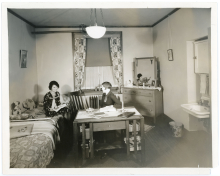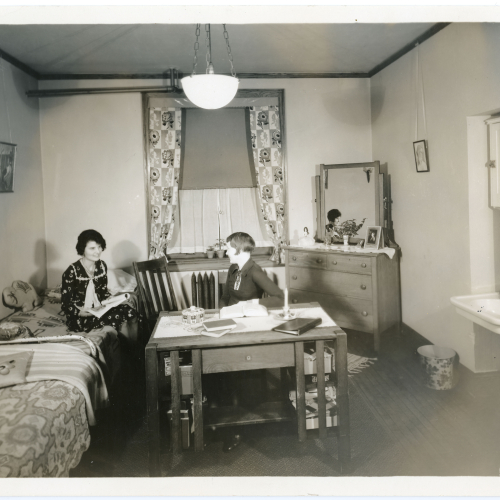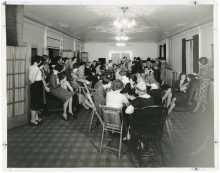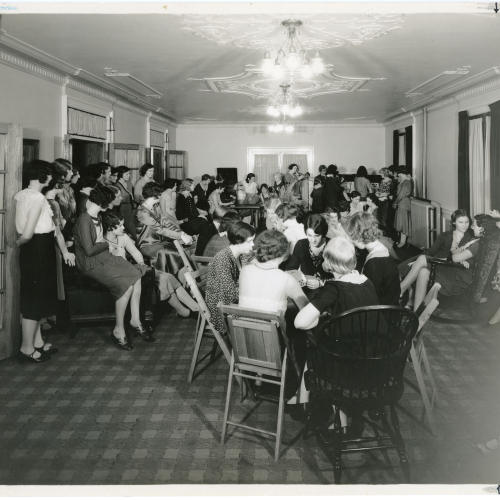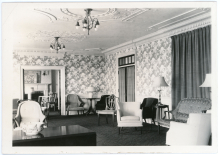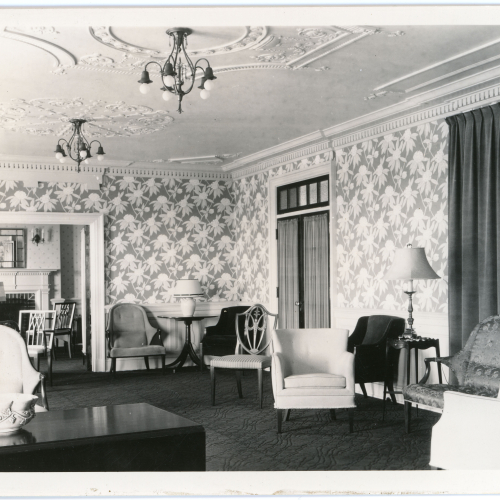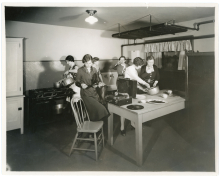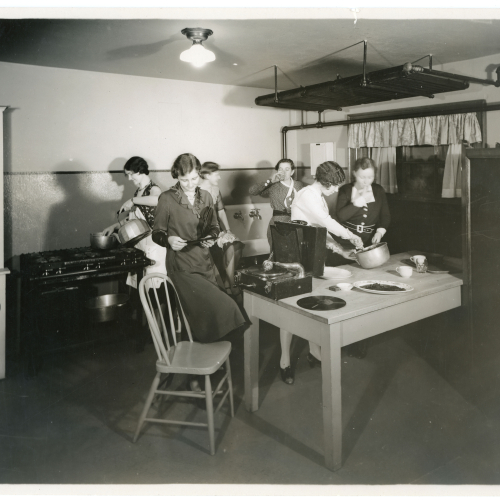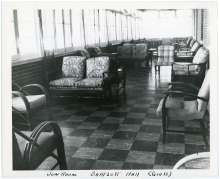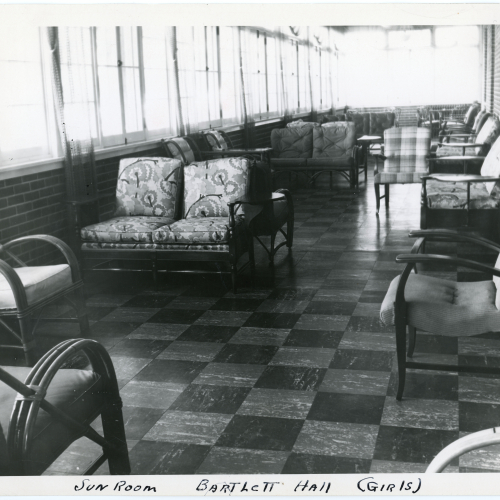Bartlett Hall (1914)
When the Iowa State Normal School opened in 1876, students lived in instructional buildings on campus, in rooming houses in Cedar Falls, or, if they lived nearby, at home. Enrollment at the Normal School grew substantially over the years. By 1892, the school needed more classroom space, so it closed its on-campus boarding facilities. Students needed to find living space in rooming houses or at home. Closing the Boarding Department led to the development of the College Hill neighborhood. Many of the large houses in the neighborhood were built shortly before and after the turn of the twentieth century to provide rooming and boarding facilities for college students. Likewise, many businesses sprang up on College Hill to meet students' needs.
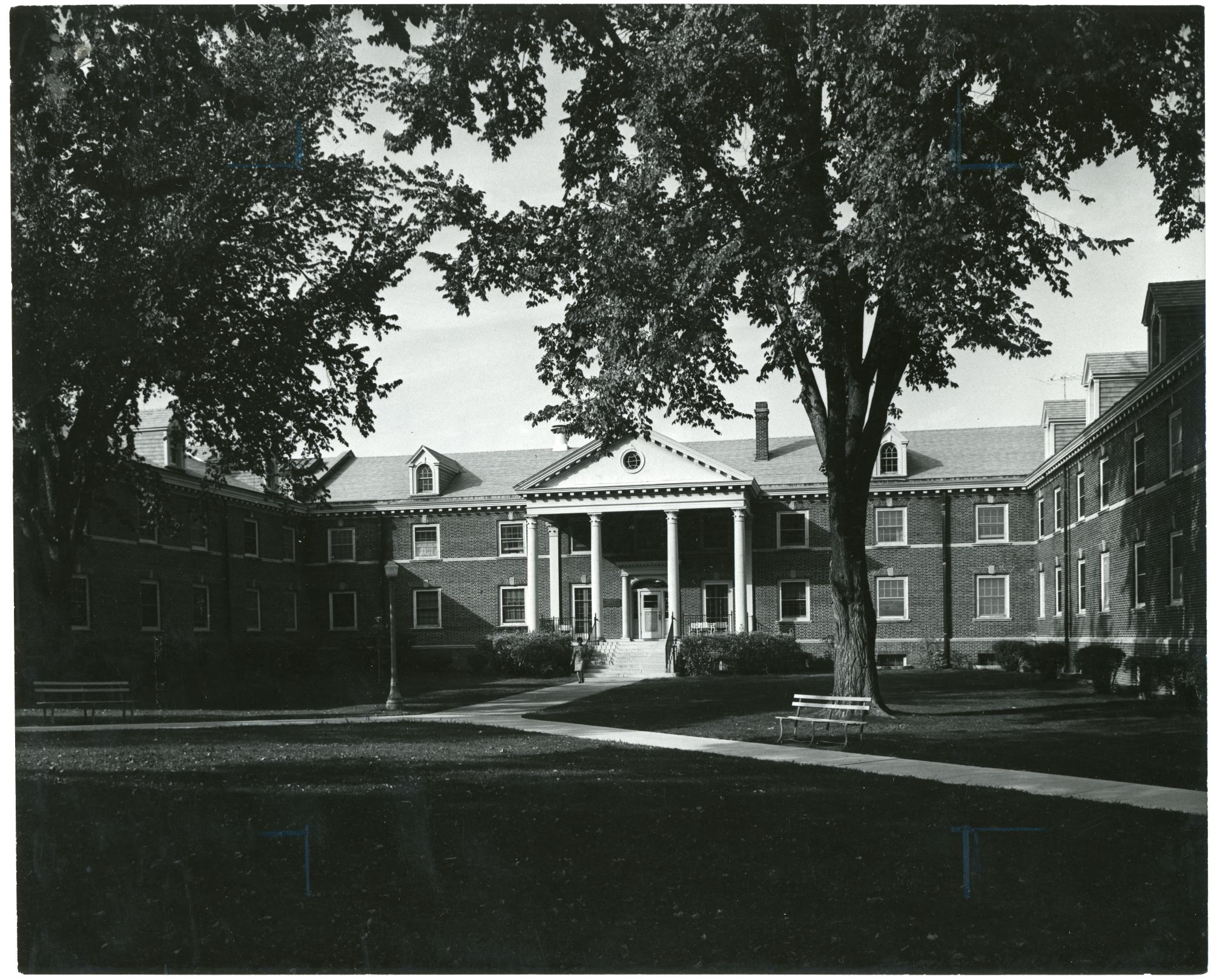
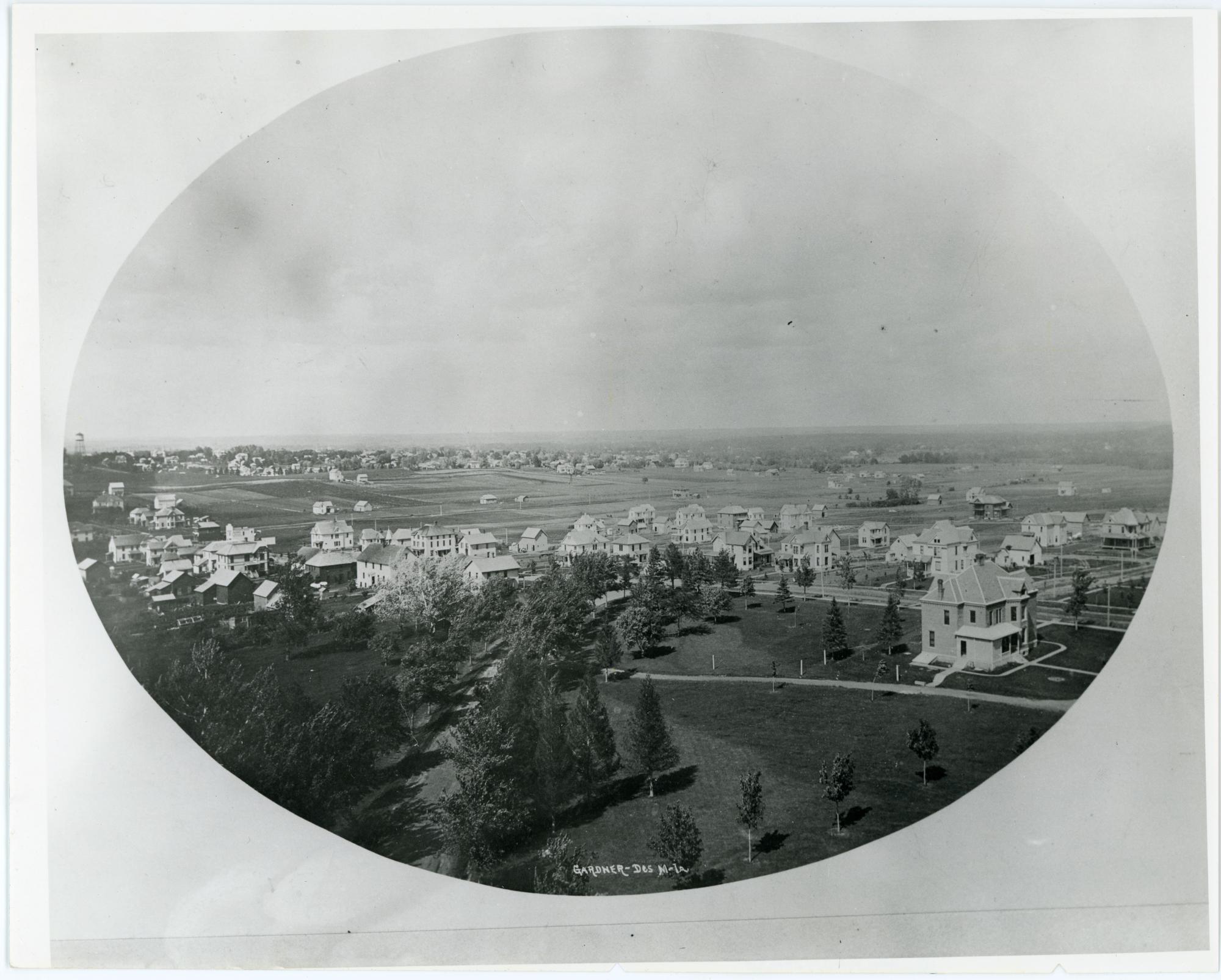
Living conditions in most rooming houses were adequate. Dean of Women Marion McFarland Walker inspected the houses and published a list of those that met her approval. Many rooming and boarding house proprietors attempted to create a homey atmosphere in their establishments but college officials were still uncomfortable with the situation. They believed they needed to exert greater control over students' lives, especially the lives of the young women who predominated in the enrollment at a teacher training institution. At the urging of the Board of Education, the predecessor to the Board of Regents, President Seerley asked the General Assembly for funding for a women's dormitory in 1912. The General Assembly approved $100,000 in funding in 1913, and the Board directed architect W. T. Proudfoot of the firm of Proudfoot, Bird, and Rawson to draw up plans in March 1914. The building would be located on the north edge of campus. It would be patterned to some extent after Currier Hall at the University of Iowa. It would house about 150 women and would include a cafeteria. Student response to the prospective new building was overwhelmingly positive. Three times as many women applied for rooms as could be accommodated. The Board was so impressed by this response that it requested two additional wings before the initial portion of the project was completed.

As the number of buildings on campus grew, the old geographical names--North Hall, South Hall, Central Hall--no longer served a useful purpose, so President Seerley proposed naming the new dormitory in honor of Moses Willard Bartlett. Professor Bartlett was a member of the first faculty of the Normal School in 1876. He taught mathematics from 1876 until 1881 and English language and literature from 1881 until his retirement in 1904. He was also Assistant Principal of the Normal School from 1880 through 1888.
Bartlett Hall and Old Gilchrist Hall were the first buildings on campus to receive names that were not based on their geography.
Construction began on the first unit in June 1914. Students moved into the dormitory on September 13, 1915, with Helen Broeksmit as Bartlett Hall superintendent. There were sixty-two double occupancy rooms and a large reception room. The cafeteria opened on September 14, 1915, with Mildred Walls as manager. It served dormitory residents as well as other students, faculty, and the general public. Cafeteria-style dining was a new experience for some students and faculty. Professor G. W. Walters is reported as sitting down at a table and waiting a long time for service before he realized that he needed to go through a serving line to select and pick up his food.
While most found the new dormitory and cafeteria a positive addition to the campus, they produced a certain amount of resentment among Cedar Falls residents, especially those who had invested in rooming houses and restaurants in the College Hill area. These people believed that the state was interfering with private business. However, college officials believed that offering hygienically prepared and nutritious food, clean rooms, and a morally sound collegiate atmosphere over-rode those concerns.
The second unit, which included a larger dining room, was completed in 1916. The third unit, which cost about $160,000 and accommodated about two hundred additional women, was completed in late 1924. It included a "social room" and a small "gymnasium." The college held a formal dedication of the completed Bartlett Hall on December 10, 1924. Pauline Lewelling Devitt and Anna B. Lawther, members of the Board of Education, made short presentations. Dorothy McFarland, who wrote the school loyalty song, spoke on behalf of Bartlett Hall residents and recited a poem.
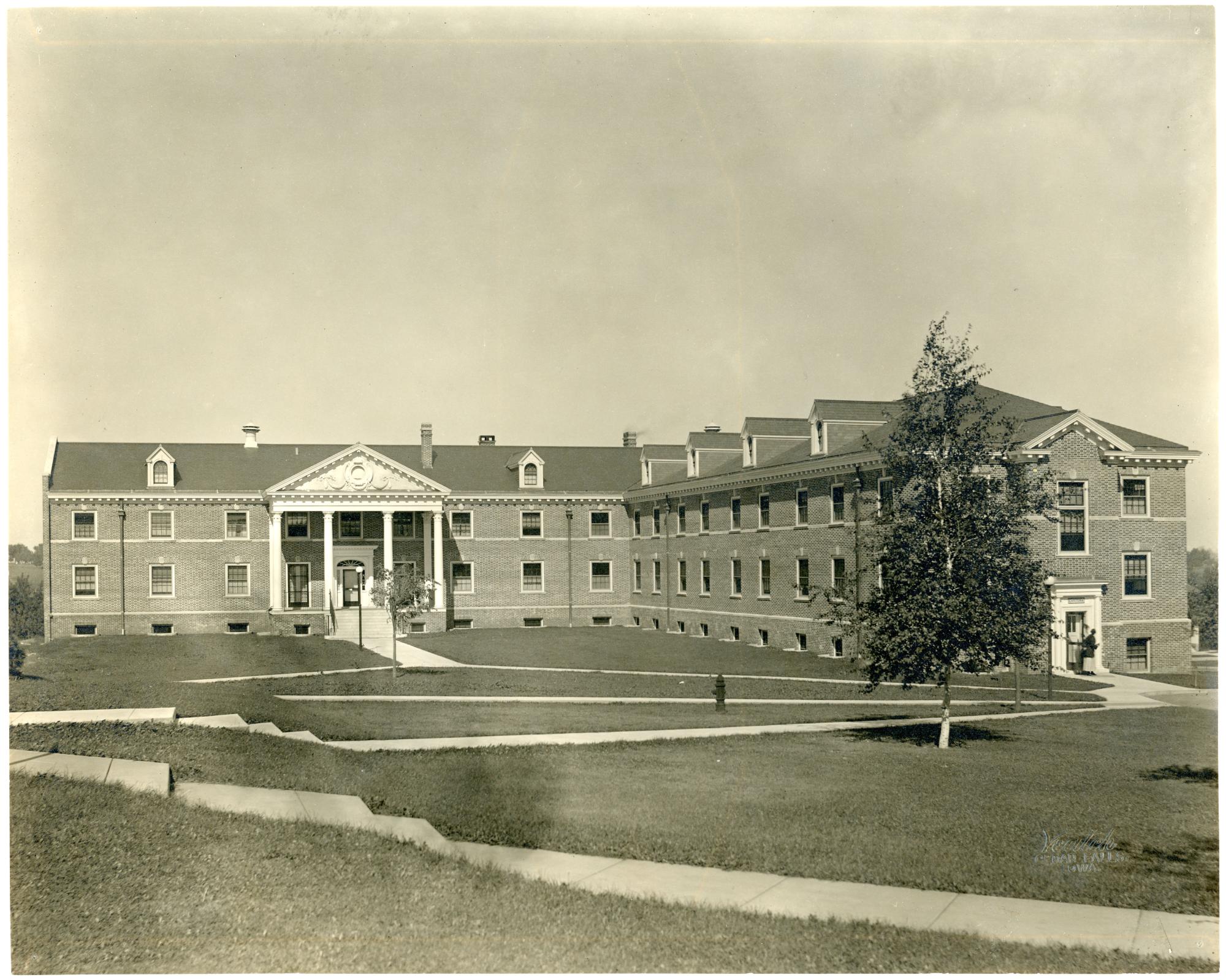
The total cost of Bartlett Hall was about $475,000. Superintendent of Buildings and Grounds James E. Robinson was in charge of the construction of all three units. The hall provided room and board for over 510 women, yet there were visions of further additions to Bartlett Hall. In September 1924, the student newspaper, the College Eye, said that increasing enrollment and students' preference for the dormitory over private rooming houses "make it only a matter of time before another addition to the dorm will begin." However, unless one considers the Commons and Lawther Hall as extensions of Bartlett Hall, further additions were not built.


In the 1931 fall term, the college reorganized the administrative structure of Bartlett Hall. These changes came about for several reasons. First, President Seerley retired in 1928; his successor, O. R. Latham, gave the entire college an administrative overhaul. As part of this overhaul he hired Sadie B. Campbell as Dean of Women.

Campbell was a strong believer in the social aspects of education. Consequently, she instituted programs in Bartlett Hall and the Commons to help students develop as leaders and good citizens. Officials believed that a "college is responsible for the social education of its students as well as their academic education; life in the dormitory is being planned more and more so as to create an atmosphere which will help each girl in the development of self-control, in the art of gracious and wholesome living, and in the pursuit of intellectual adventure." A second reason for the administrative change was that the severe financial impact of the Depression led the college to seek any means possible to reduce costs. The administrative change was perceived as a cost-saving measure. Under the new plan, the Dean of Women would have general supervision of Bartlett Hall. Mary Haight, who had been head of Bartlett Hall for eight years, would continue in that capacity but would no longer have responsibilities for the cafeteria. Ruth Mitchell would become Director of Foods and manage that portion of the dormitory operation. Dr. Helen M. Lynch, a newly-hired physician, would be responsible for "the maintenance of healthful and sanitary living conditions" in Bartlett Hall and would be available for consultation on matters of women's health. The two east wings of Bartlett Hall would be known as Section A. The two west wings would be known as Section B. Those sections were also referred to as Bartlett Hall East and Bartlett Hall West. Each section would be supervised by an assistant director, who would be assisted by four student counsellors. Students would serve as day desk clerks, formerly a paid staff position. Margaret Cowie would serve as night desk clerk.
Bartlett Hall residents quickly organized their lives in the new building. In the first two years of the hall's operation, they held regular "at homes," organized a form of governance, and adopted a Bartlett Hall song. They developed their own traditions, including an annual colonial party, and they had a regular news and gossip column in the College Eye.
Bartlett Hall has three main levels, excluding the attic, but including the basement where meals were prepared and served in the early years. The building featured parlors where women could relax and entertain. The parlors included comfortable chairs, tables, lamps, radios, pianos, and writing desks. Some included fireplaces. In January 1932, the telephone system in Bartlett Hall was improved. Prior to that time, the only telephone was located in the Bartlett Hall office. It could take five minutes for a resident to reach the main office to take her call. The new system installed a total of sixteen telephones throughout the hall so that students would be able to take a call more quickly.
In 1935, the living rooms were redecorated and refurbished in a Georgian style with modern touches in colors. The basement, formerly the dining hall, was converted into a recreation room with table tennis, a phonograph, and a floor waxed for dancing. Space for a small kitchen and several tables was developed at this time. Since the time of its opening in 1915, Bartlett Hall had been running at or near capacity in accommodations. In 1937, for example, it was filled to capacity at 520 women with three hundred women on the waiting list. This demonstrated need for more housing led to the construction of the first unit of Lawther Hall, which opened in the summer of 1940. Freshmen would be assigned to Bartlett Hall and upperclassmen to Lawther Hall. The arrangement did not last long.
During World War II, the college contracted to provide housing, facilities, and training for units of the US Navy and the Army Air Corps. After the 1942 fall term, the women in Bartlett Hall moved out to make room for a thousand WAVES.
From late 1942 through early 1945, Bartlett Hall was home to women who were undergoing WAVES boot camp and yeoman training. The former dining area on the ground floor became the sick bay, and the color scheme became military.
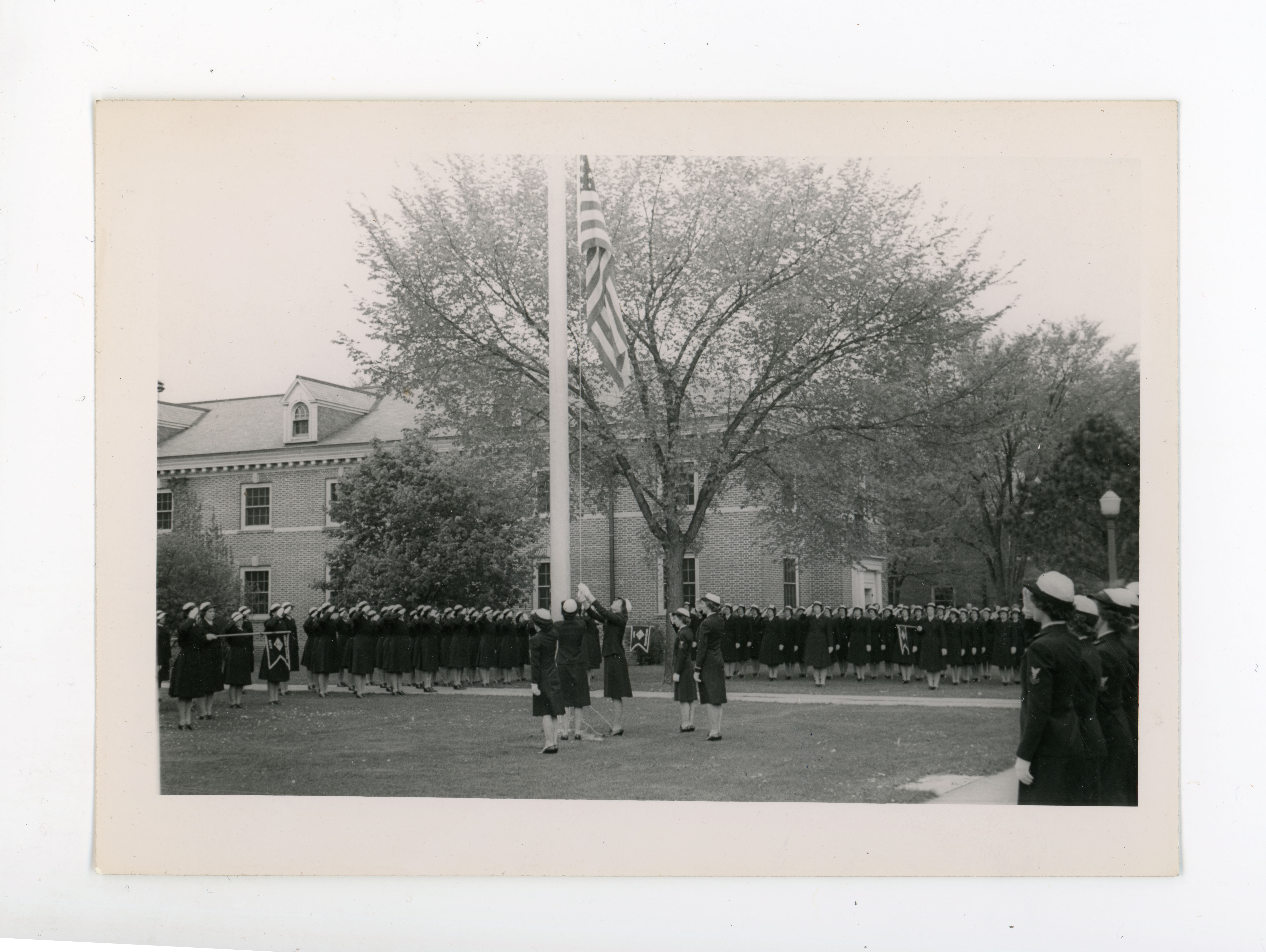
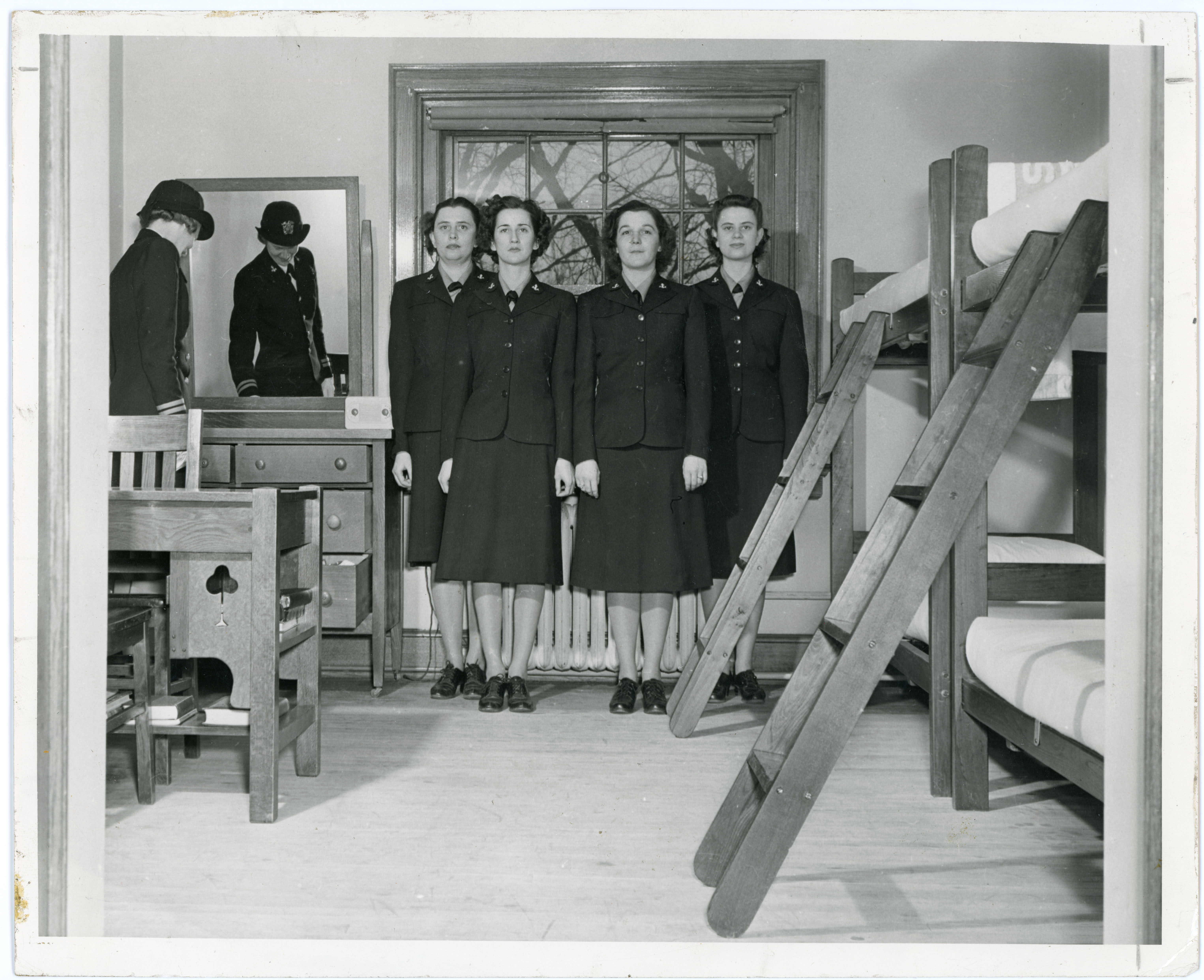
After the WAVES left on April 30, 1945, the college redecorated the entire hall. The Gold Lounge, to be used as a combination reception and living room, was done in gold, gray, and chartreuse. The Green Lounge, to be furnished to entertain guests, was done in green, yellow, and rust, and the Rose Lounge was done in rose, gray, and platinum. Students’ rooms were painted in seven different colors: peach, gold, green, blue, ivory, gray, and pink. In 1946, the former sunroom, known as the Yellow Kitchen, on the eastern side of Bartlett Hall, was remodeled to accommodate an additional thirty-seven students.
In the summer of 1959, the corridors and many rooms in Bartlett Hall were repainted. Also at that time, triple rooms were converted to double rooms and no students were assigned to attic rooms. In 1962, the heating system was upgraded in an $80,000 project. In 1965, rooms were painted and new light fixtures were installed in a $60,000 project. In April 1965, women in the portions of Bartlett Hall A section affected by the project were shifted to Lawther Hall, Campbell Hall, and other parts of Bartlett Hall. Bartlett Hall B received similar work in a $96,000 project in 1966. A $150,000 project in 1977 addressed safety concerns, drainage problems, and other necessary improvements to the building. It also brought the dormitory up to its theoretical capacity of 550. The completion of that project allowed both men and women to live in Bartlett Hall East. Students were allowed to cook for themselves under a "no board" housing contract. Also at that time, telephones were installed in individual rooms. Because Bartlett Hall remained open during breaks in the academic calendar, it was a popular home for graduate and international students. In 1978, a new freight elevator was installed, and in 1980, handicapped accessibility was improved. That year, Bartlett Hall celebrated its 65th anniversary with a reception and dance.
A $100,000 project in 1982 addressed concerns cited by the State Fire Marshall in a 1979 inspection. In 1983, the university closed the top floor of Bartlett Hall, known as the Penthouse, in response to fire safety concerns. The alternative to closing that level would have been to install fire escapes at significant expense.
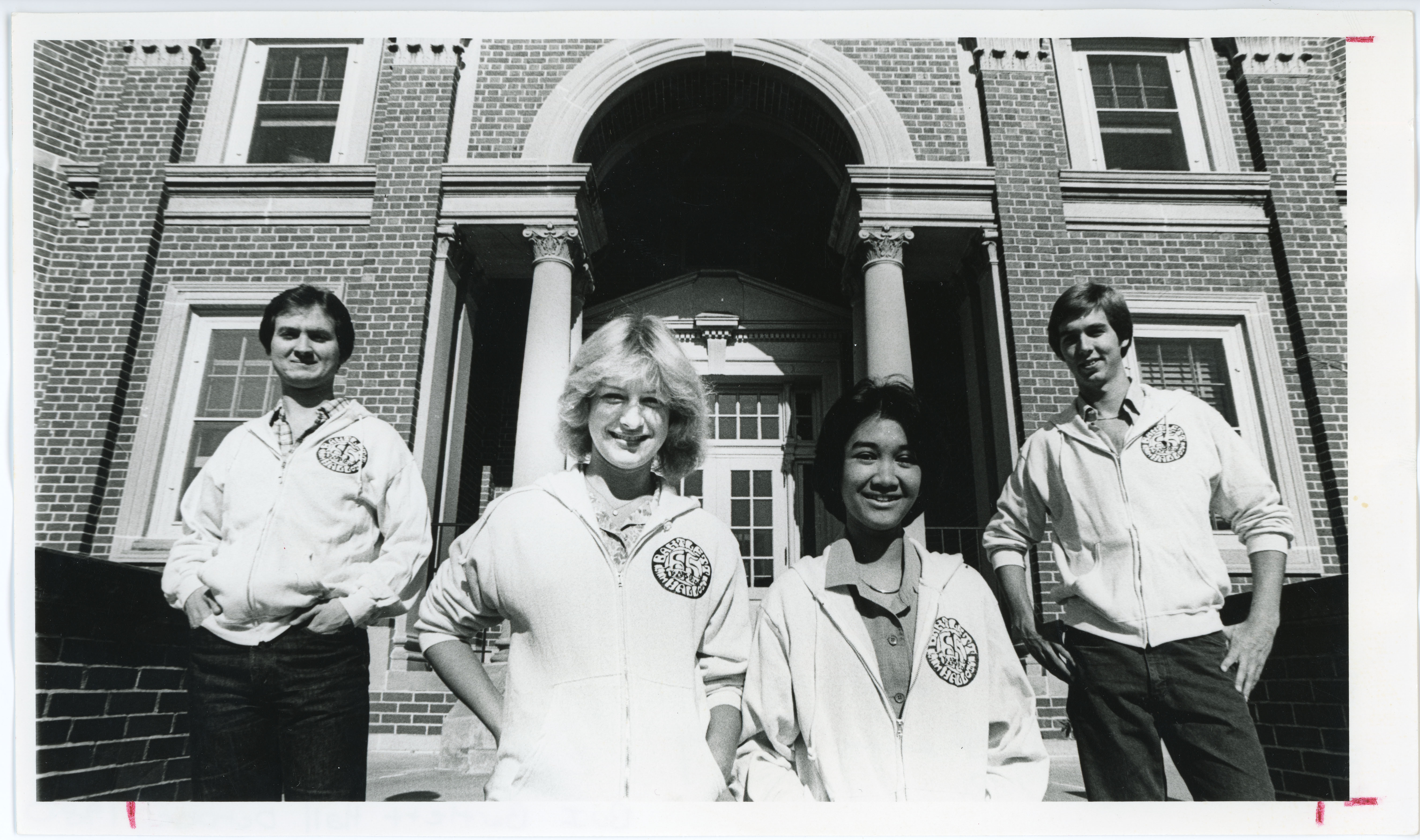
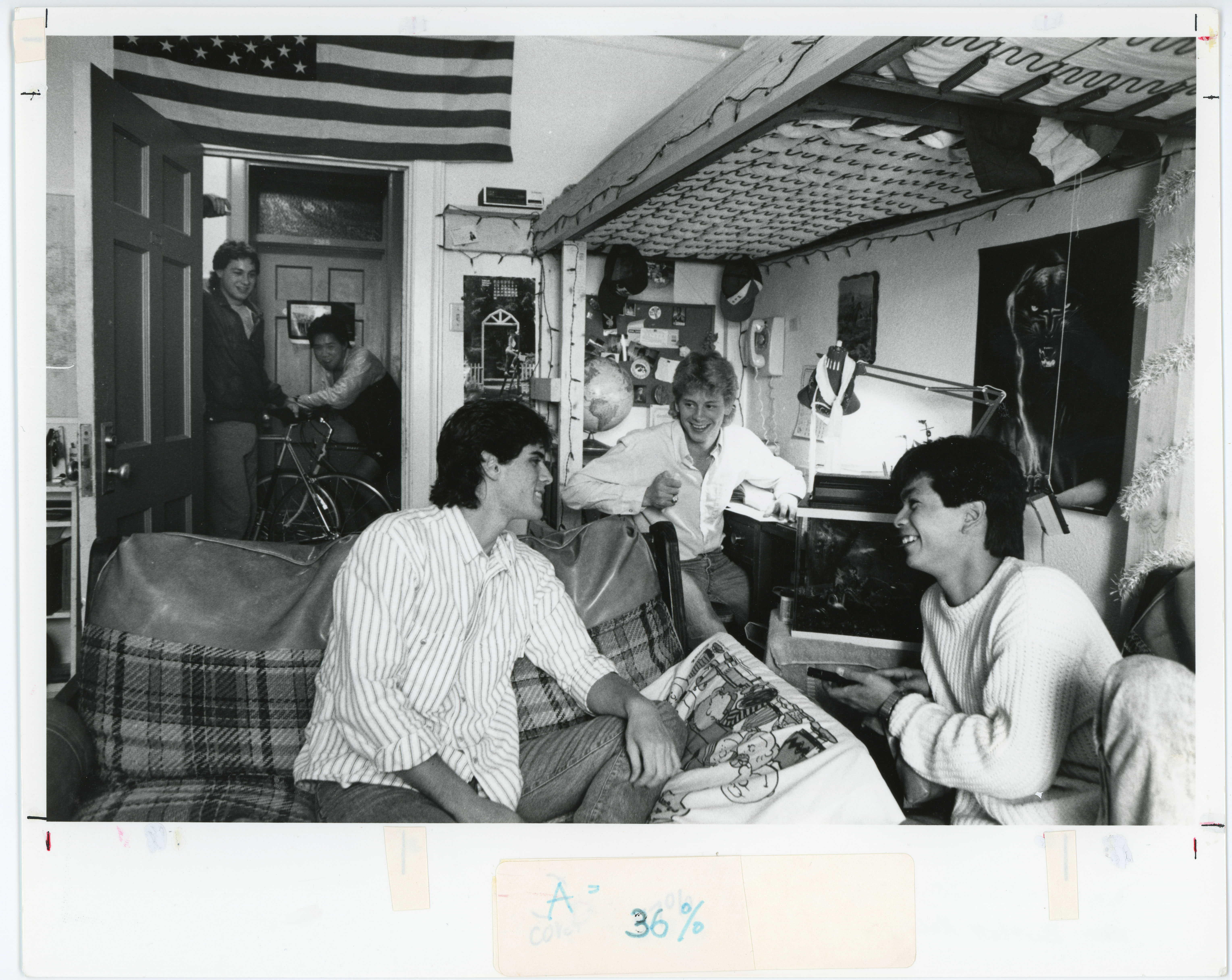
Shortly before his resignation in 1983, President Kamerick announced plans to end the use of a portion of Bartlett Hall as a dormitory and to renovate that space for alumni services offices. When President Curris arrived, he put those plans on hold while he assessed the larger view of office space on campus. Lee Miler, director of alumni services, said, "We see the renovation approach as a short-term solution . . . We should prefer to have a separate, privately funded alumni center that would meet all our space needs into the future." Bartlett Hall closed for the summer session of 1984 to address major repairs, especially to the plumbing system, after a steam valve failure in May 1984 left the building without a reliable supply of hot water. Students who had been living there moved to the Towers for the summer.
In February 1985, the Board of Regents approved a plan to renovate Bartlett Hall East to allow for a consolidation of student services in that area. Architects Stenson, Warm, Grimes and Port of Waterloo were selected to design this project. Bartlett Hall East would be closed off from the rest of the hall and, at a cost of $975,000, completely remodeled into large offices. Air conditioning would also be added. This area would be called the Student Services Center. Housing officials stated that reducing the capacity of the residence hall system would not have a significant effect. Work was projected to take from six to nine months. When the area was opened in the late spring and early summer of 1986, it included offices for the Vice President for Educational and Student Services, Placement and Career Services, Academic Advising, Educational Opportunity Program, Counseling Center, handicapped services, vocational rehabilitation, and the Learning Skills Center. University officials believed that this arrangement made services more convenient and more visible to students. The Graduate College office moved to Bartlett Hall East in 1988.
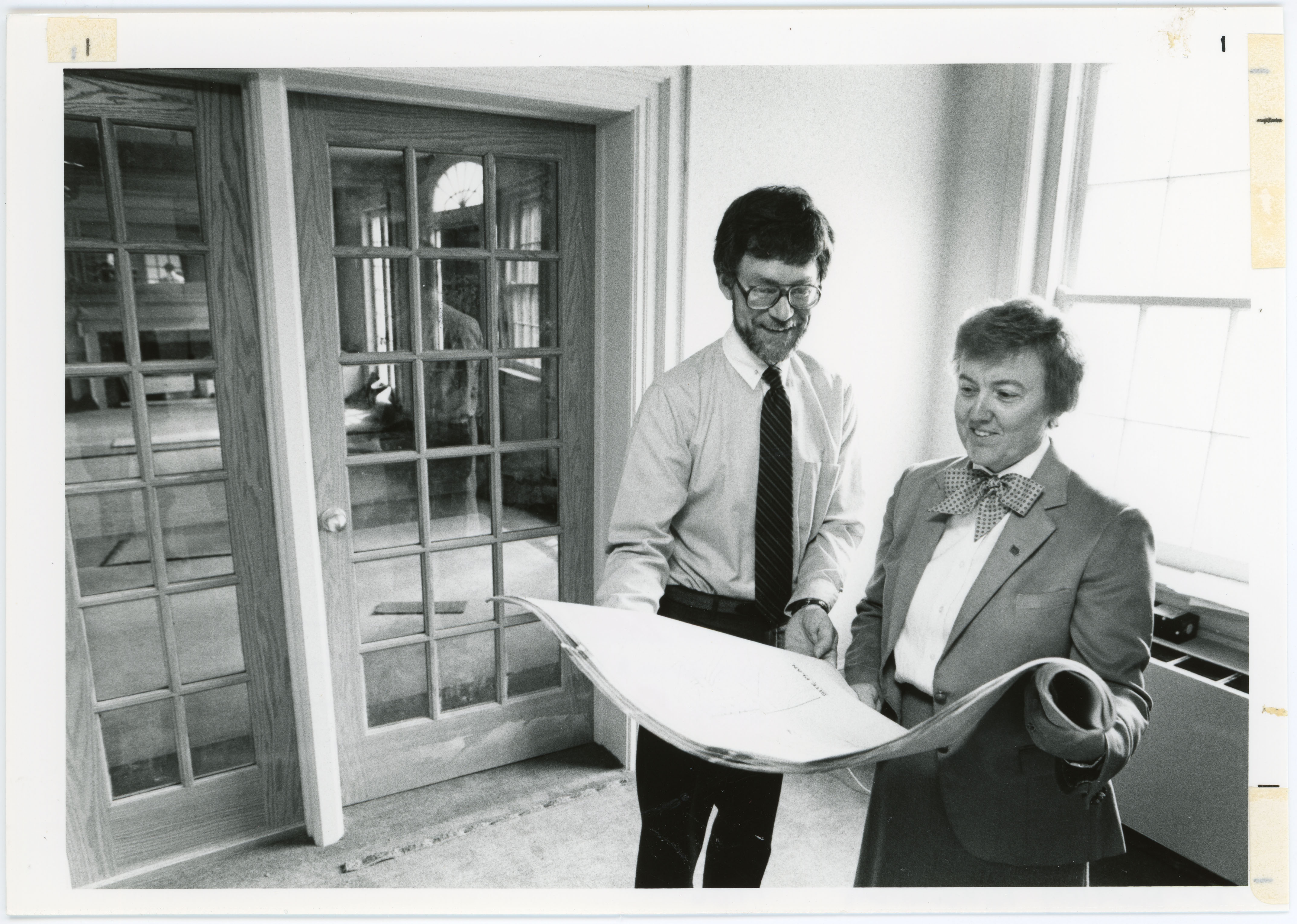
The university began a series of improvements in the student housing section of Bartlett Hall in the fall of 1985. Included was new furniture, a new laundry room, a redecorated TV lounge, and more convenient mailboxes. In 1992 and 1993, the residence section of Bartlett received new windows, air conditioning, and a new heating system. Individual controls allowed each student to control the temperature in his or her own room.
While complaints surfaced occasionally about the physical condition of Bartlett Hall, students seemed to like the co-ed living arrangements in which rooms for men and women were sprinkled around the hall. Bartlett Hall was something of a pioneer in these arrangements on campus. A letter writer to the Northern Iowan, in April 1997, said that she liked the laid back atmosphere of Bartlett Hall. She believed that co-ed arrangements that separated genders by a hall door were a step backwards. She concluded her letter, "The purpose of having houses is to create a smaller community within the residence hall. The only way to get this community in a coed environment is to mix the sexes next door to each other and to have one RA."
In the summer of 1998, Bartlett Hall received fire safe doors and new data and phone lines. These lines were part of a campus-wide plan to hard wire all of the dormitories for Internet service. In 1999, the hall underwent roof renovations and tuck pointing. The roof work included reconstruction of the cupolas.
With renovations completed in Gilchrist Hall, most of the student services moved out of Bartlett Hall in 2004. Portions of the Marketing and Public Relations office moved into some of the space that was vacated when student services moved out.
In June 2011, university officials presented a report to the Board of Regents. That report recommended the demolition of Baker Hall and the conversion of the remaining residence hall units in Bartlett Hall to offices and laboratory space. The cost of this project would be about $21 million. The Board approved the recommendations. Bids went out in May 2012.
The last student residents of Bartlett Hall moved out at the close of the spring 2012 semester. The building had served the school well as a residence hall for ninety-seven years.
Remodeling work was completed by late 2013. At the end of the fall 2013 semester, many of the faculty and departments that had been housed in Baker Hall moved into the newly-renovated quarters in Bartlett Hall.
Compiled by Library Assistant Susan Witthoft; edited by University Archivist Gerald L. Peterson, July 1996; substantially revised by Gerald L. Peterson, with research assistance by Student Assistant Janelle Iseminger and scanning by Library Assistant Gail Briddle, June 2004; updated, January 28, 2015 (GP); photos updated and citations added by Graduate Assistant Eliza Mussmann, November 11, 2021; content edited by Graduate Intern Marcea Seible, April 2025.

